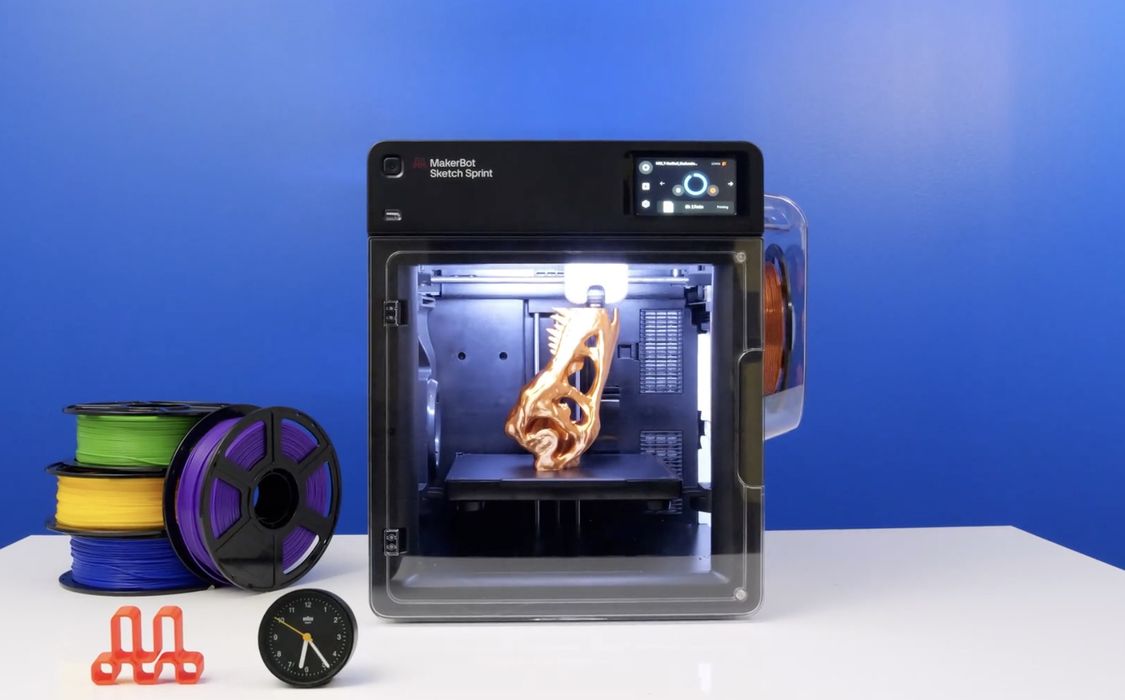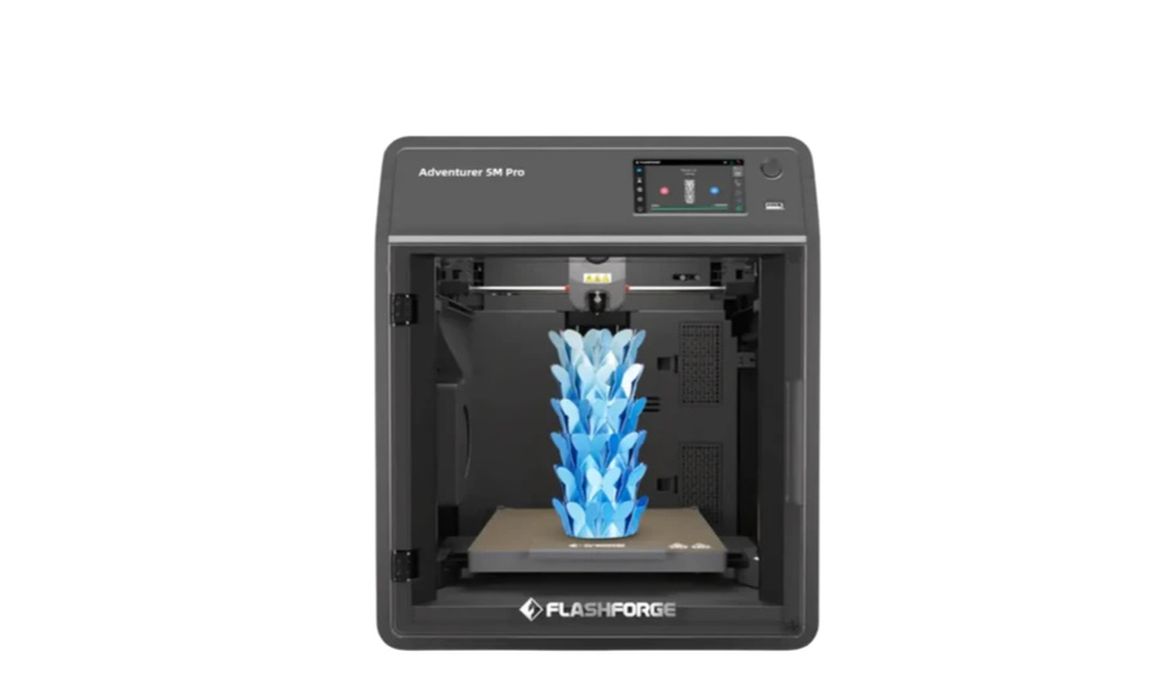
MakerBot recently announced a new 3D printer, the Sketch Sprint. Some think it’s a Flashforge 3D printer, but is it?
It’s common for products to be white labeled. This means that a manufacturer produces the product, but places a different company’s brand name on it for retail sales. That way the branding company doesn’t have to do the manufacturing, which can be challenging. An example of this would be refrigerators, where rumors say there are only two companies in the world making refrigerators, and everything you see is rebranded.
Could this be the case with MakerBot’s new Sketch Sprint? There are rumors online that the Sprint is a rebranded Flashforge Adventurer 5M Pro.

Let’s compare these two machines and see how close they are — or aren’t.
Our first angle will be visual. Do these machines look the same from the outside?
Both machines are fully enclosed, with a clear front door that opens on the right. No surprise here, there are many machines that have this identical configuration.
The control panel is placed at the top right, and appears suspiciously similar. The Flashforge machine has a beveled top, pointing the panel upwards, whereas the Sprint faces forward.
The spool mount is quite different between the machines. The Flashforge has the spool mount on the back, while the Sprint has an enclosed spool dock on the right hand side of the machine. The Flashforge machine does not enclose the spool.
Inside the build volume, we can see a filtration system on the right hand side on both machines.
Visually, the machines are similar, but with several differences.
What about the machine specifications? I prepared a table with specs that could be compared. Note that not all specs are published by both companies, so only some can be directly compared:
| Sketch Sprint | Adventurer 5M Pro | |
| Max Print Speed | 300 | 600 |
| Motion System | CoreXY | CoreXY |
| Calibration | Automated | Automated |
| Vibration Compensation | Yes | Yes |
| Filament Run Out Sensor | Yes | Yes |
| Spring Steel PEI Plate | Yes | Yes |
| Build Volume | 220 x 220 x 220 | 220 x 220 x 220 |
| On board camera | Yes | Yes |
| Direct Drive | Yes | Yes |
| Max Hot End Temp | TBD | 280C |
| Air Filtration | HEPA + Carbon | HEPA + Carbon |
| Network | WiFi | WiFi + Ethernet |
| Max Plate Temp | 110C | 100C |
| Materials | PLA | PLA PETG ABS TPU CF |
| Pin Code Lock | Yes | No |
| UL Certified | Yes | No |
| Nozzles | 0.4mm | Multiple options |
What to make of this? The machines seem mechanically identical, with the same build volume and motion system. However, there are differences with the materials: the Sprint supports only PLA and Tough PLA, whereas the Flashforge supports a variety of engineering materials, and likely has a higher nozzle temperature.
Curiously, the Sprint has a higher possible plate temperature, even though PLA usually doesn’t require a plate temperature exceeding 60C.
Another difference is that the Sprint has a PIN code locking system, which would be highly useful in classrooms. Remember, the Sprint is targeted at the education market; it’s not a machine for engineers or prototypers.
The Sprint is certified with UL and other standards, while the Flashforge, as far as I can tell, is not. That’s also critically important for educational purchases.
Finally, the Sprint comes with around 600 different lesson plans, and is ready for action almost immediately with teachers and students. The Flashforge device could print the same items, but does not have the lesson plans.
To answer the question, is the Sprint really a Flashforge machine? The two devices seem extraordinarily similar, but the Sprint has a number of tweaks and add-on features that are specifically for the education market.
It could be that UltiMaker (the owner of the MakerBot brand) engaged with Flashforge to manufacture a new device based on the Adventurer 5M Pro platform, but with a series of education-oriented changes.
For educators buying the machine, I don’t believe they care which company actually made the machine, so long as they receive value from using the device. UltiMaker has equipped the Sprint with features that will certainly be attractive to the education market, and the certifications almost guarantee a reasonable market share for the Sprint.
Via MakerBot and Flashforge
